Blog, News & Offers
Myopia Management, Stellest lenses
Posted on Thursday, August 4, 2022
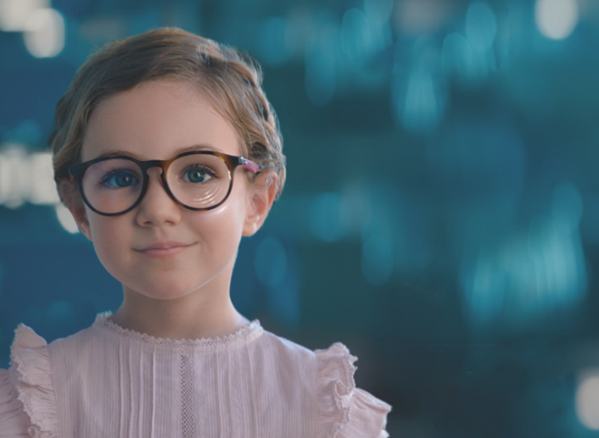
DID YOU KNOW THAT MYOPIA HAPPENS WHEN CHILDRENS EYES GROW MORE THAN THEY SHOULD? WHEN THIS PROCESS DOESN’ T STOP WE CALL IT MYOPIA PROGRESSION.
Playing, working, reading, discovering the world .... Did you know that more than 80% of children's learning occurs through vision? Myopia can seriously impact your child's eyesight and life. More children are getting myopia at a younger age – partly due to a rise in the use of digital devices and an increasing amount of time spent indoors focused on near activities. The younger a child develops myopia, the further it evolves and the higher it becomes.
DON’T JUST CORRECT MYOPIA, CHOOSE TO CONTROL IT
Today most myopic children are wearing standard ophthalmic lenses. These lenses correct myopia and allow children to see clearly. However, their myopia is still worsening. This means that as children grow, their myopia may progress, requiring stronger prescriptions. The more the correction grows the more they are dependent on their glasses.
This also means the risk of becoming highly myopic and developing complications increases.
High myopia is a major concern nowadays, affecting children’s daily lives as well as their development.
The good news is that today, with Stellest™ lenses, it’s possible to control their myopia progression from an early age. This is a major and a crucial choice for our children, because the earlier you control their myopia progression, the less their vision will be impacted.
MORE TIME OUTSIDE LESS TIME SPENT DOING NEAR ACTIVITIES!
While myopia is likely to increase during these growth years, there is now clear evidence to show that the rate of progression can be slowed for many children, significantly reducing the lifelong risks to eye health. Increasing the number of hours spent outside in early childhood (ideally before myopic onset) has been shown to reduce the risk of onset of myopia. This is thought to be due to the cumulative effect of daylight on the eye, helping to strengthen the eyeball, along with the requirement of the eyes to look at a greater distance when outdoors. Reduce the numbers of hours spent at near activities or on digital devices to a minimum.
CAN MYOPIA PROGRESSION BE STOPPED?
“Myopia (short sight) Control”, is the term used to describe solutions like Essilor StellestTM Lenses that slow the progression of short-sightedness in children. Myopia typically starts during childhood or adolescent years and increases as the eyes continue to grow. With increased levels of myopia, the risks of conditions like retinal detachment, myopic maculopathy, cataract, and Glaucoma increase. It is believed that by 2050, 1 in every 2 people in the world will be short-sighted. Myopia control spectacle lenses have been proven to slow the progression of short sightedness in children.
A recent clinical trial showed that Essilor® Stellest™ lenses slow down myopia progression by 67% on average, compared to single vision lenses, when worn 12 hours a day.*
Get in touch today to discuss the options of Myopia Control for your child or book an eye examination.
* Compared to single vision lenses, when worn by children at least 12 hours per day every day. Bao, J., Huang, Y., Li, X., Yang, A., Zhou, F., Wu, J., Wang, C., Li, Y., Lim, E.W., Spiegel, D.P., Drobe, B., Chen, H., 2022. Spectacle Lenses With Aspherical Lenslets for Myopia Control vs Single-Vision Spectacle Lenses: A Randomized Clinical Trial. JAMA Ophthalmol. 140(5), 472–478. https://doi.org/10.1001/jamaophthalmol.2022.0401
Digital hearing aids and free hearing checks.
Posted on Tuesday, August 2, 2022
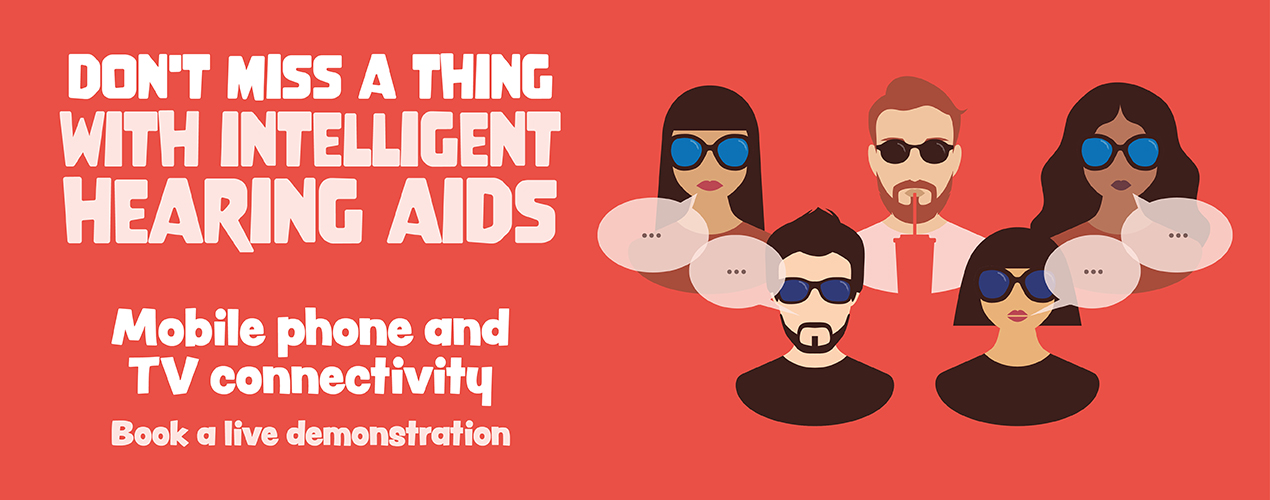
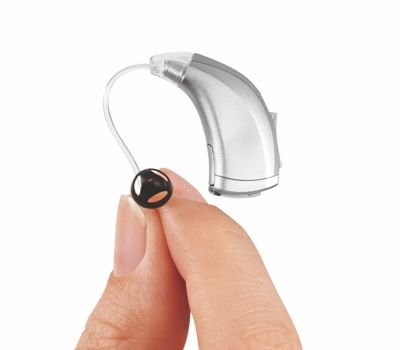
As one of our primary senses, being able to hear helps us to communicate and engage with the people around us. As we age, our ability to hear begins to change and unfortunately deteriorate but it can take time for people to become aware of the impact that poor hearing can have on everyday life. Whether it’s constantly asking loved ones to repeat themselves or turning up the T.V, there are some tell-tale signs that you may be suffering with hearing loss. It’s important to not stress yourself out too much if you think your hearing is deteriorating as it is now easy to determine if you have hearing loss and plenty of options to improve the quality of your hearing.
Our ability to hear can change for a number of reasons. It may be as simple as excessive ear wax or an infection, both of which can be easily treated. A long-term change in hearing may be due to a number of factors:
Age-related hearing loss
This is the most common form of hearing loss and affects as many as 50% of people over the age of 60.
Noise exposure
Prolonged and repeated exposure to noise can damage hearing. This may be caused by working in a noisy environment or taking part in certain activities such as DIY, attending concerts and listening to personal music players.
Within the inner ear is an organ called the cochlea. Situated inside the cochlea are a number of tiny hair cells that receive the sound signals entering the ear and transfer them on to the brain. Each of these sets of hair cells are ‘tuned’ to a particular frequency and over time some of these literally wear out, which is why certain sounds become muffled and difficult to hear.
Coming to terms with hearing loss can be difficult but with the correct help and advice from our team better hearing is a reality for most people in later life. If you think your ability to hear well has deteriorated over the past few years then a free hearing check is the best way to find out!
Unfortunately we are unable to offer NHS hearing aids but we can provide state of the art digital hearing aids and a free hearing assessment to demonstrate how they may benefit you as well as all your aftercare needs.
Our comprehensive hearing assessment is carried out by one of our qualified Hearing Aid Audiologists (HAA), it takes approximately 45 minutes and is made up to of the following steps:
Step One: Initial discussion
Our Hearing Aid Audiologist will ask you about your medical history, as well as your lifestyle and occupation. You will be asked about any hearing difficulties you may be experiencing, if you have worn hearing aids before and in what specific situations you would like to hear better.
Step Two: Checking the health of the ears (Otoscopy)
An instrument called an Otoscope is used to look inside your ears, checking for any blockages or abnormalities of the ear drum and the ear canal. Should any conditions be discovered that are best addressed by your GP, our Hearing Aid Audiologist will refer you for further investigation.
Step Three: Checking the level of hearing (Audiometry)
A computerised audiometer is used to establish how well you can hear. By playing different tones at a set range of frequencies and volumes, our Hearing Aid Audiologist is able to determine your level of hearing. Should the results require it, your HAA will also fit a hearing aid at this point, to demonstrate the improvements to your hearing that are possible.
Step Four: Explanation of results
It is extremely important that you fully understand the results of your Full Hearing Health Check. Therefore, we ensure that we take the necessary time to explain the results at the end of the appointment. If your Full Hearing Health Check determines that a hearing loss is present, our Hearing Aid Audiologist will advise you of the most appropriate solutions for you.
If you or a loved one are ready to talk about how a digital hearing aid may help you, please contact your local practice to arrange an assessment or to find out more.
Summer offers 2022
Posted on Tuesday, August 2, 2022
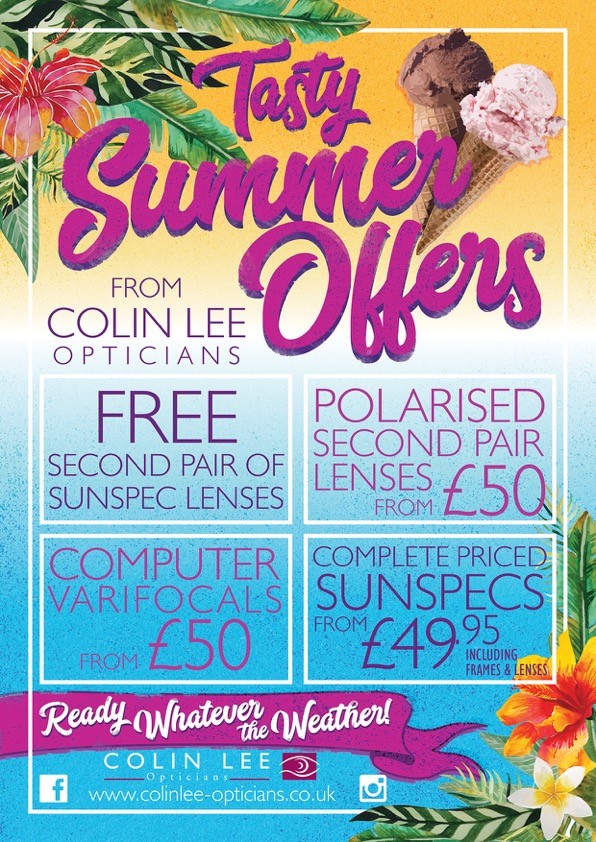
Grab yourself a bargain this summer with one of our tasty offers.
What ever your needs, we have a second pair offer for you.
Free second pair of single vision sunspec lenses with a variety of lens options purchased as a first pair
or
Upgrade your free pair to a polarised sunspec for £50 single vision, £75 for Bifocals or £100 varifocal. Not just that we will match the thickness of your first pair and the varifocal design so you wont be settling for second best when the sun is shinning.
Need something better for indoor use, our computer varifocals are perfect for anyone who uses a computer. Single vision lenses don't leave the screen and the desk both clear, computer varifocals will though as they have a slight graduation of power. Readers for the 21st century. These are available from £50 including antiglare.
What ever your needs this summer we have you covered.
Myopia Management, What is it and how does it work?
Posted on Tuesday, August 2, 2022
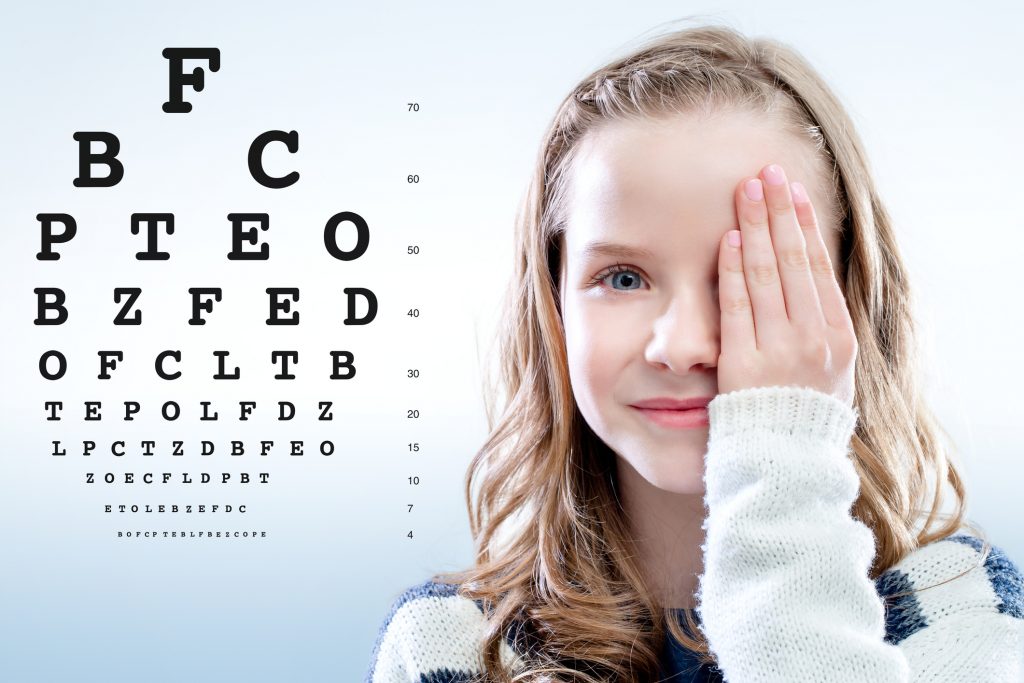
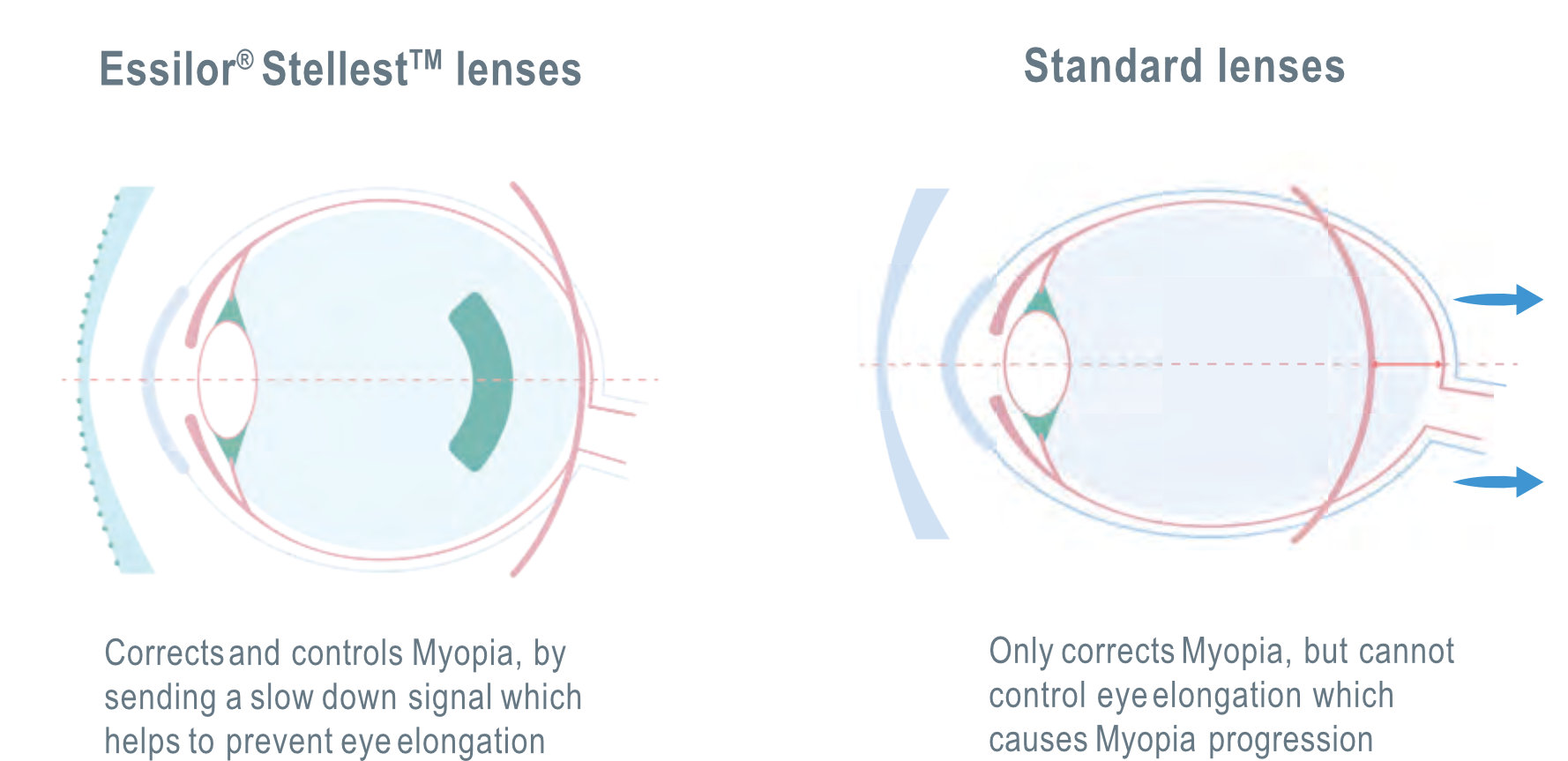
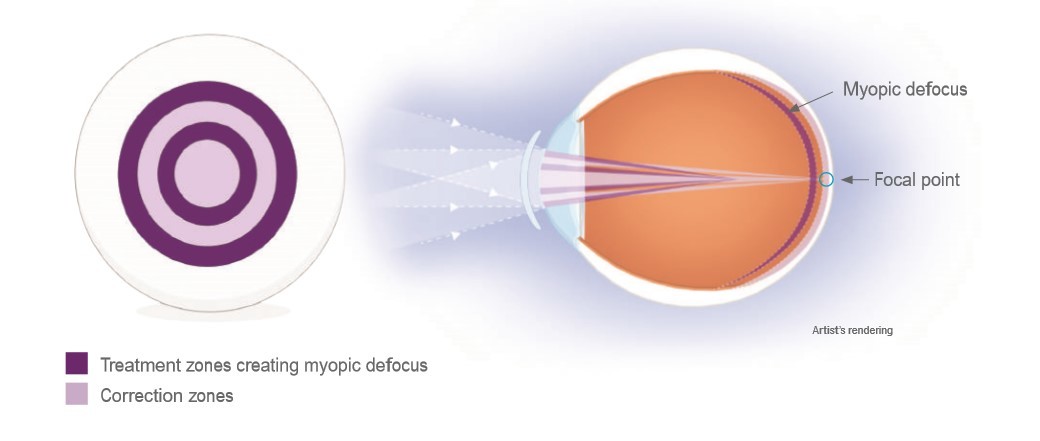
Research on Myopia management has been dubbed as the most significant clinical findings in the world of optics for generations. The prevalence of myopia is projected to increase from approximately two billion people worldwide in 2010 to almost five billion people in 2050, bringing with it immediate and long-term health challenges. In fact, the proportion of young people with myopia in the UK has more than doubled over the last 50 years, in those aged between 10–16 years and children are becoming myopic at a younger age. What was a trend we within the profession had noticed and asked; "why are we seeing so many more kids who are short sighted" we now have answers for. So please, if you are a parent, guardian, grandparent, aunty, uncle, godparent please take the time to read this article and pass the information on.
First things first.
What is myopia?
Myopia is another word for short-sightedness. If your child is myopic, this is usually because their eyes are either longer (front-to-back), or more powerful than most eyes. This means that light focuses in front of the retina (at the back of the eye) rather than focussing clearly onto the retina. This will make distance vision blurred and spectacles, contact lenses or refractive surgery is needed to produce clear distance vision. Myopes usually have good near vision and do not need any help from spectacles or contact lenses to see clearly close-up.
Who is affected?
Around 1 in every 3 people in the UK are myopic and the number is rising year on year. The condition usually begins in childhood (6-13 years) and tends to worsen until the eye has stopped growing, usually in the late teens or early twenties. In the UK, the number of myopic children aged between 10-16 years has more than doubled over the last 50 years, and children are starting to become myopic at a younger age. The problem is, the younger the child is when they become myopic, the greater the final level of myopia is likely to be and becoming myopic before the age of 9 increases the risk of high myopia (>6.00D).
So why is it a problem being Myopic?
Spectacles and contact lenses (or laser surgery for adults), will enable myopic eyes to see clearly, these come in minus power form. In higher levels of Myopia, more advanced lenses are required to see clearly and yes they are more expensive, even with the best lens forms the image produced by lenses cannot reach the higher levels of sight someone with less power may achieve. But this isn't the main problem with myopia. Sadly, just being myopic means you are more likely to suffer from a serious visual condition later in life. If a person has a high level of myopia, they will be at a greater risk of developing these serious sight threatening conditions later in life such as retinal detachment, glaucoma and macular degeneration.
Just being myopic means you are 2-3x more likely to develop Glaucoma, Retinal detachment and/or Myopic maculopathy later in life. The risk accelerates the more myopic you become. -5.00 to -7.00 and your risk of retinal detachment increases to 21x and maculopathy 40x. And worse still when over -7.00 retinal detachment is 44x more a risk and maculopathy 126x more likely to effect that person.
What this really tells us is that when we are thinking about adult complications connected to myopia , ANY amount of increase in myopia counts, so every amount prevented also counts. And that's important, because we can now slow the progression of myopia through Myopia Management.
What causes Myopia?
Research shows that any of the following increase the likelihood of a child becoming myopic:
• Having one or both parents with myopia.
• Spending limited time outdoors.
• Spending excessive time on near object tasks.
Time spent outdoors and time on near objects are factors that until last year were only theory's. We noticed that kids were spending more time on phones, tablets and computers and we were seeing higher levels of short sightedness SO now we have proof of this link, we can do something about it.
Can I reduce the progression of my child’s myopia?
Trying to slow the progression of myopia is called myopia management. A number of methods have been developed for myopia management Firstly you may read into myopia management some more and see the use of eye drops being discussed. Atropine has been found to be helpful, but use is not licenced in the UK.
Currently the best results for available methods in the UK are found when specially developed contact lenses or spectacle lenses are used (or ideally a mixture of both), with research showing between 40-60% reduction in myopia progression after 1-2 years of use and the manufacturer’s results showing better results still over a longer period of time.
The purpose of myopia management is that a child will grow up with a lower level of myopia than they would have had without treatment. This means:
• Being less myopic will reduce their chances of developing adult sight threatening conditions.
• Not depending on their glasses as much as they would if the progression was more severe.
• Spectacle lens powers needed in adulthood being lower, meaning thinner, lighter and leave you with more lens options to choose between.
• The vision achieved with spectacles may be better, as high myopes, even with the best spectacle correction, may have reduced vision as the image seen is smaller.
What are the treatment options?
Changes in lifestyle:
At the very least, if your child is already myopic or scores as a high risk on the calculations, you should:
• Encourage them to spend more time/play outdoors.90 minutes a day is optimal.
• Limit screen time, 30 mins then a break.
• Hold/sit them further away from screens 30cm away and further the better.
• Remove spectacles when doing near activities.
All of these changes will reduce the amount of focussing effort and muscle contraction in the eyes and help in slowing myopia progression by 0.25D every 2 years.
Spectacle lenses
There are 2 lens types currently available which help slow the progression of myopia:
• H.A.L.T (High aspheric lenslet technology) by Essilor called Stellest(tm)
• D.I.M.S (Defocus Incorporated Multiple Segments) lens technology by Hoya called Miyosmart(tm)
Contact lenses
• Soft daily disposable lenses which have been designed to change the focus of light in peripheral vision such as Cooper vision MiSight.
How both the contact lens and the spectacle lens work is complicated but what recent research has proven is the reason why a myopic eye continues to grown is because standard corrective spectacle or contact lenses focus light perfectly on one part of the retina leaving the majority of the peripheral retina out of focus. As a large proportion of the retina is out of focus the eye grows to become in focus elsewhere on the retina but once again out of focus on the most sensitive part we do most of our visual processing from and we therefore correct to using spectacle correction.
Both the specialised lens and contact lens have a central are of focus for this one part of the eye as well as rings of differing power for the peripheral retina. Some of the pictures above show how they work.
By using one of these options it has been clinically proven to slow progression of myopia by over 60%
. This means that if fitted early enough with this lens, most children will end up with less than half the strength of myopia than if fitted with a conventional contact lens or spectacles.
This means when considering the risks discussed earlier, treatment can significantly reduce the risk of a child developing sight threatening conditions in the future.
Although myopia management may reduce the risk of your child developing myopia related sight loss in adulthood, it does not take the risk away altogether, simply makes it less likely.
Only after a full generation of research will we know if myopia management is cost effective in reducing sight threatening conditions, but the current evidence is overwhelming. You just cannot say for sure until after a whole generation of data goes through research. All we know at the moment is myopia is linked to sight threatening pathology and these treatments lower the progression of myopia.
Sadly for now these treatments are not funded by NHS. Lifestyle advice is free, please take it on board. I think we all know a child with a tablet, a teenager with a mobile phone and another with a games console. Look how close they get to it, compare that to how close a generation before read books and games consoles on monitors instead of TV's you can sit back from. Its much closer meaning much more strain on the eye and for longer in a day.
If you would like to find out more, please contact your local practice. We have Opticians trained in understanding Myopia management at every practice who will be happy to help.
Blog Search
Blog Categories
- News (62)
- Sunglasses (3)
Blog Archives
- March2024 (1)
- November2023 (1)
- October2023 (1)
- August2023 (2)
- June2023 (2)
- April2023 (1)
- November2022 (1)
- October2022 (2)
- September2022 (1)
- August2022 (4)
- June2022 (3)
- May2022 (3)
- March2022 (3)
- December2021 (1)
- November2021 (2)
- July2021 (2)
- June2021 (1)
- May2021 (2)
- April2021 (3)
- March2021 (2)
- February2021 (4)
- January2021 (1)
- December2020 (1)
- November2020 (2)
- October2020 (1)
- September2020 (2)
- July2020 (1)
- April2020 (2)
- March2020 (3)
- January2020 (1)
- July2019 (3)
- June2019 (2)
- February2019 (1)
- October2016 (1)
- September2016 (1)
- June2016 (1)
Offices
- Aldridge (1)
- All Offices (24)
- None (37)